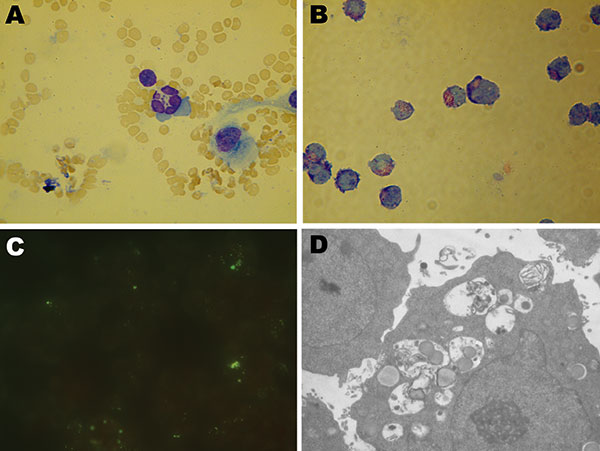Volume 16, Number 5—May 2010
Research
Anaplasma phagocytophilum from Rodents and Sheep, China
Figure 1

Figure 1. Photomicrographs of cells infected with Anaplasma phagocytophilum. A) Wright-Giemsa–stained granulocytic cell of a BALB/c mouse. B) Wright-Giemsa-stained HL60 cells. C) Immunofluorescent-stained infected HL60 cells. D) Electron photomicrographs of an HL60 cell. Original magnifications ×1,500 (A–B), ×1,000 (C), and ×6,200 (D).
Page created: December 23, 2010
Page updated: December 23, 2010
Page reviewed: December 23, 2010
The conclusions, findings, and opinions expressed by authors contributing to this journal do not necessarily reflect the official position of the U.S. Department of Health and Human Services, the Public Health Service, the Centers for Disease Control and Prevention, or the authors' affiliated institutions. Use of trade names is for identification only and does not imply endorsement by any of the groups named above.